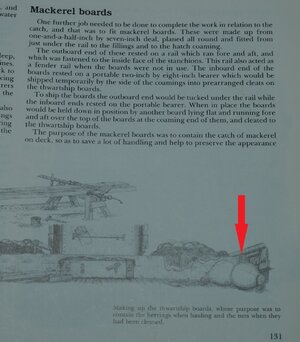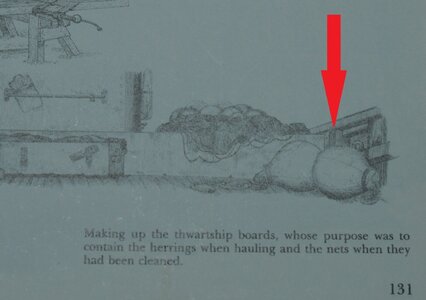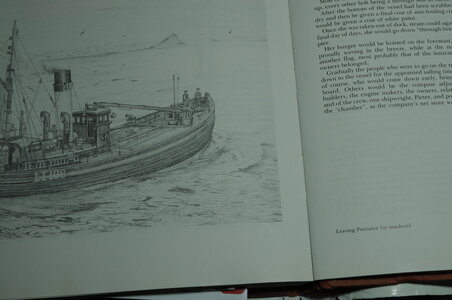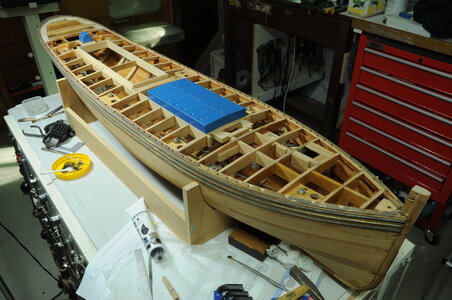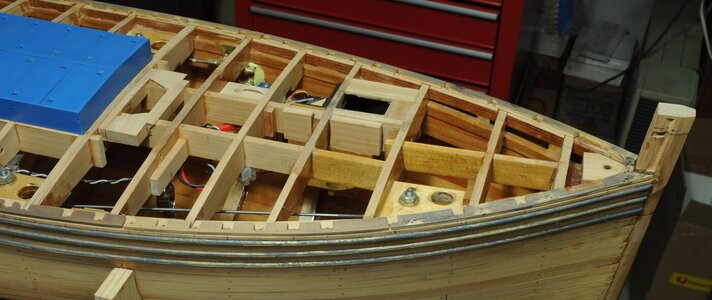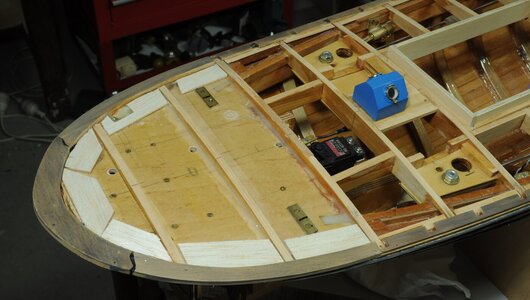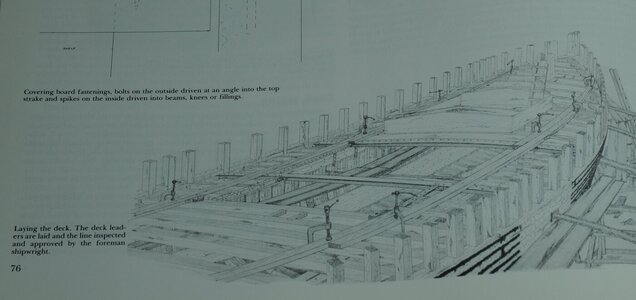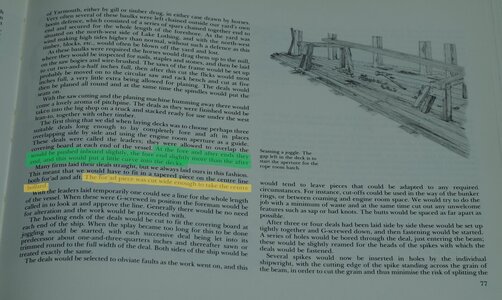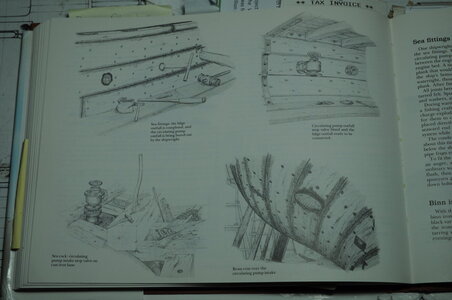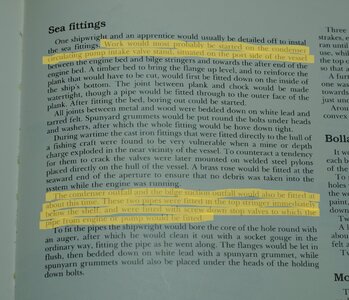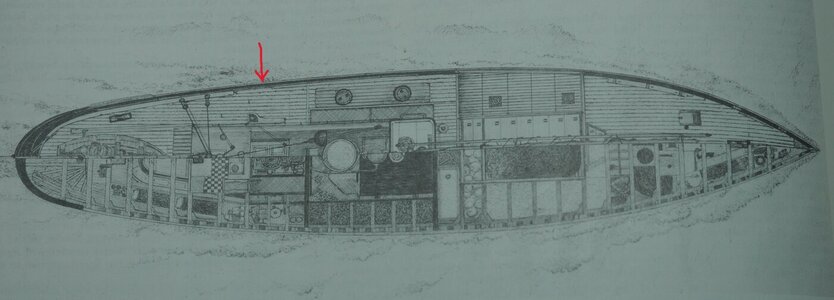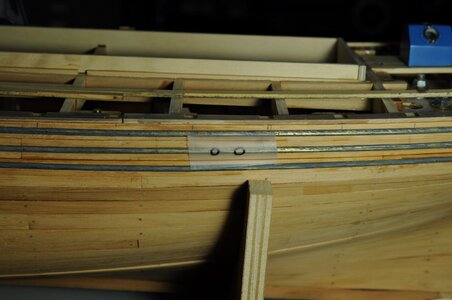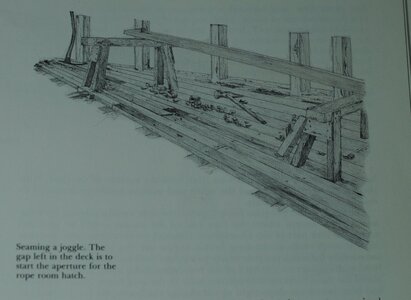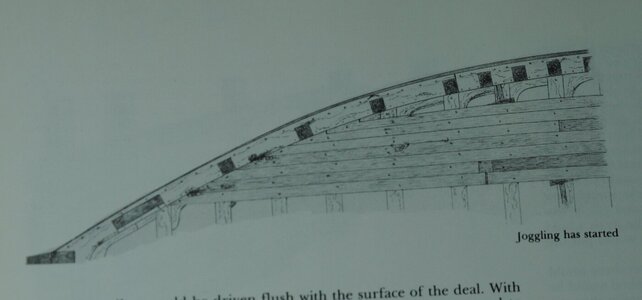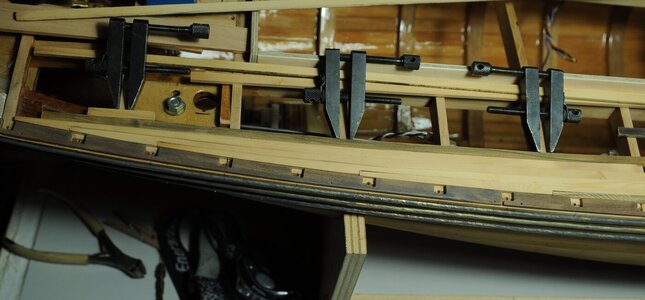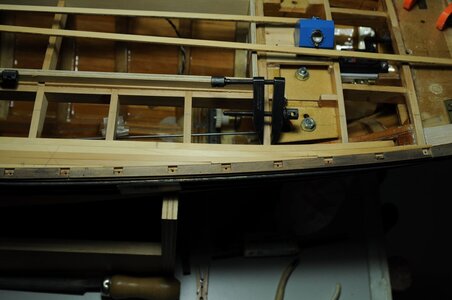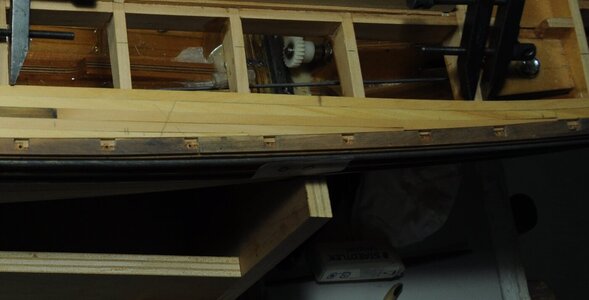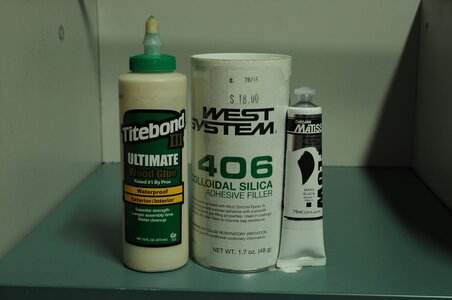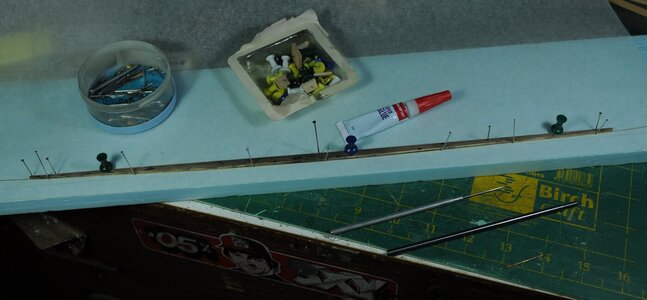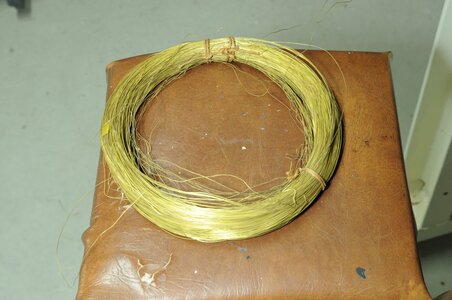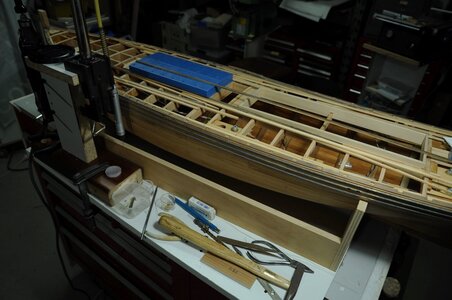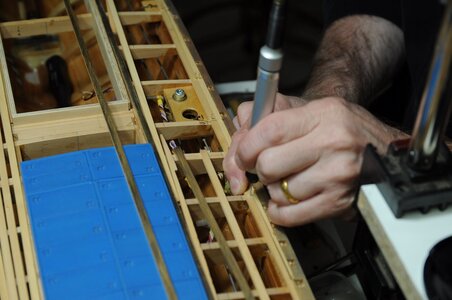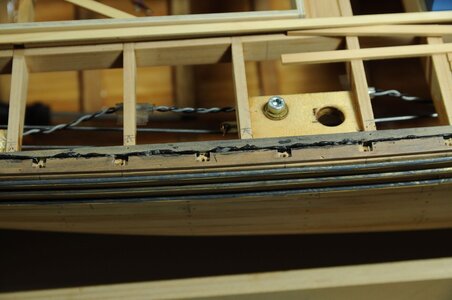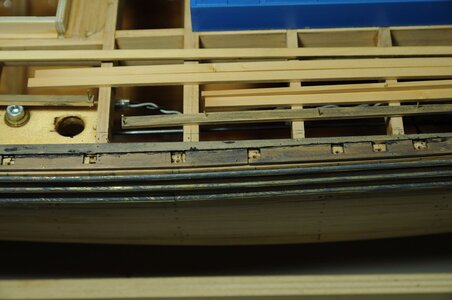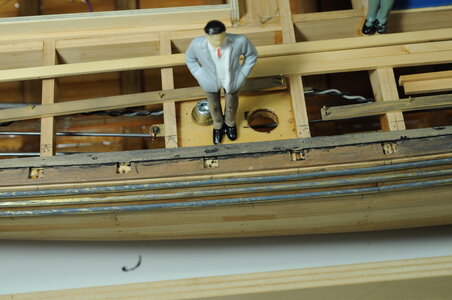Installing a Sail Winch.
I have always been going to RC the Mizzen sail. Controlling both Raise & Lower and Port & Starboard using 2 servos or winches.
The original idea was to mount both servos in the Galley (aft part of deck house) later on it became apparent that the Port & Starboard servo would be best placed somewhere aft of the deck house.
This is something I had forgotten about, although while looking at my decking attempts, I started thinking whether there was anything else I needed to do under the deck level before laying all of the deck. Then I remembered I needed to fit a servo, or should I say “shoe horn” one in as there is not a lot of space left once the steam plant is in.
The plans show 3 tackles attached to the aft end of the Mizzen boom.
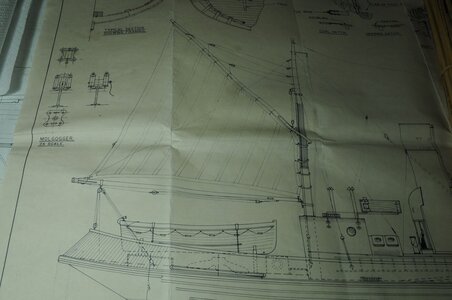
From my limited knowledge of Gaff rigs having these 3 tackles is not generally practiced on other types of vessels, in Ted’s book there is a brief description of why the other 2 tackles are present.
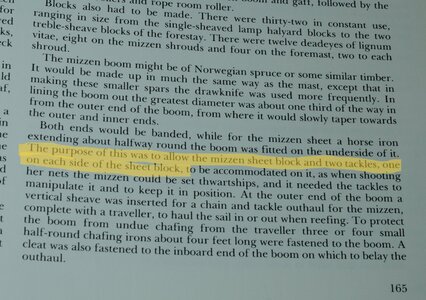
Thankfully I had a 4 turn Sail Winch in stock and could start playing around with how on earth I was going to squeeze it in. In the end it wasn’t too bad, after a bit of a fiddle I made up a cardboard template and adjusted it a couple of times, then cut the shape into a piece of plywood later adding some strengthening pieces out of Spruce.
I drilled a hole in the aft sub deck for a brass tube to be inserted into and thread it’s way to the servo position avoiding the rudder actuator, later on after much thought I decided to add a second tube to enable me to control 2 lines or I can drop back to a single. I then added a couple of clamps to keep the brass tubes in place.
The reason for this is I am concerned about the angle that the center tackle will tip over to will be very flat when the Mizzen boom is let out a fair bit, which I think will cause the boom to lift quite a bit, this is due to the mounting point being very high, that’s where the ability to try adding another tackle this time Port & Starboard should prevent the boom lifting all that much, we will see how that plays out later on.
Then some more adjustments, drill mounting holes make a brass nut and glue in place, the entire servo and mount are removable if needed, to finish off I varnished the mount and areas that I had ground down in fitting the brass tubes.
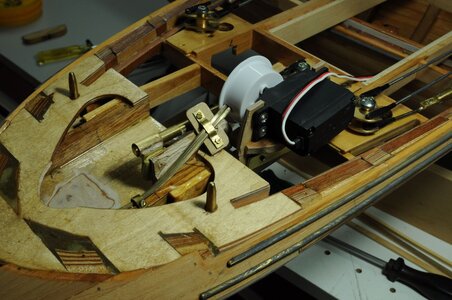
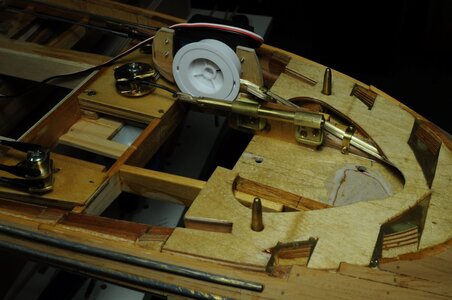
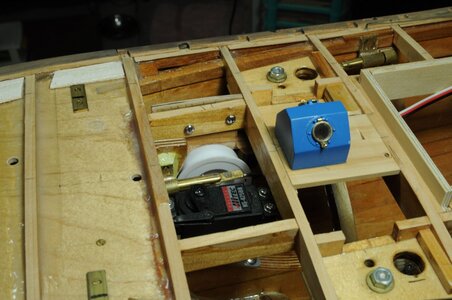
This photo shows the mount installed without Sail Winch, but with brass nut being glued in place.
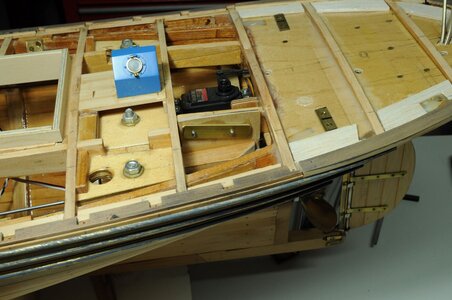
I have included some pics of the steam plant in the boat with the removable upper section in place, before the deck is fully on, I am really glad I installed all the gear before doing the deck as it would have been a nightmare to do after the deck is fitted.
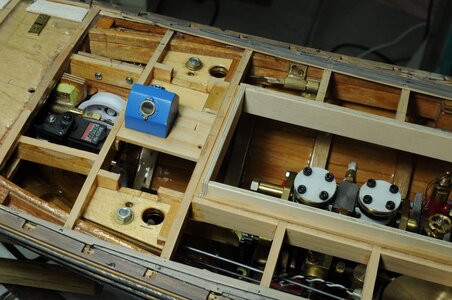
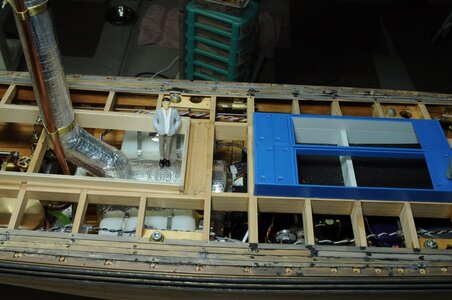
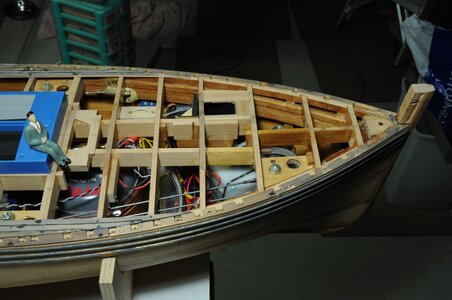
More to come…
Thanks for looking in and reading my ramblings or just looking at the photo’s and stay safe.
Cheers,
Stephen.







